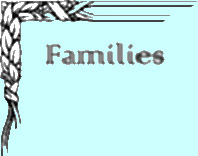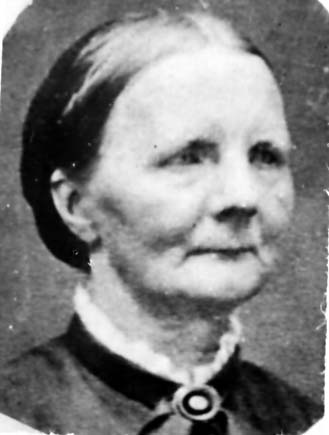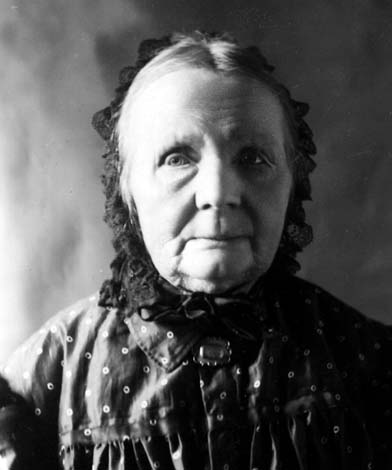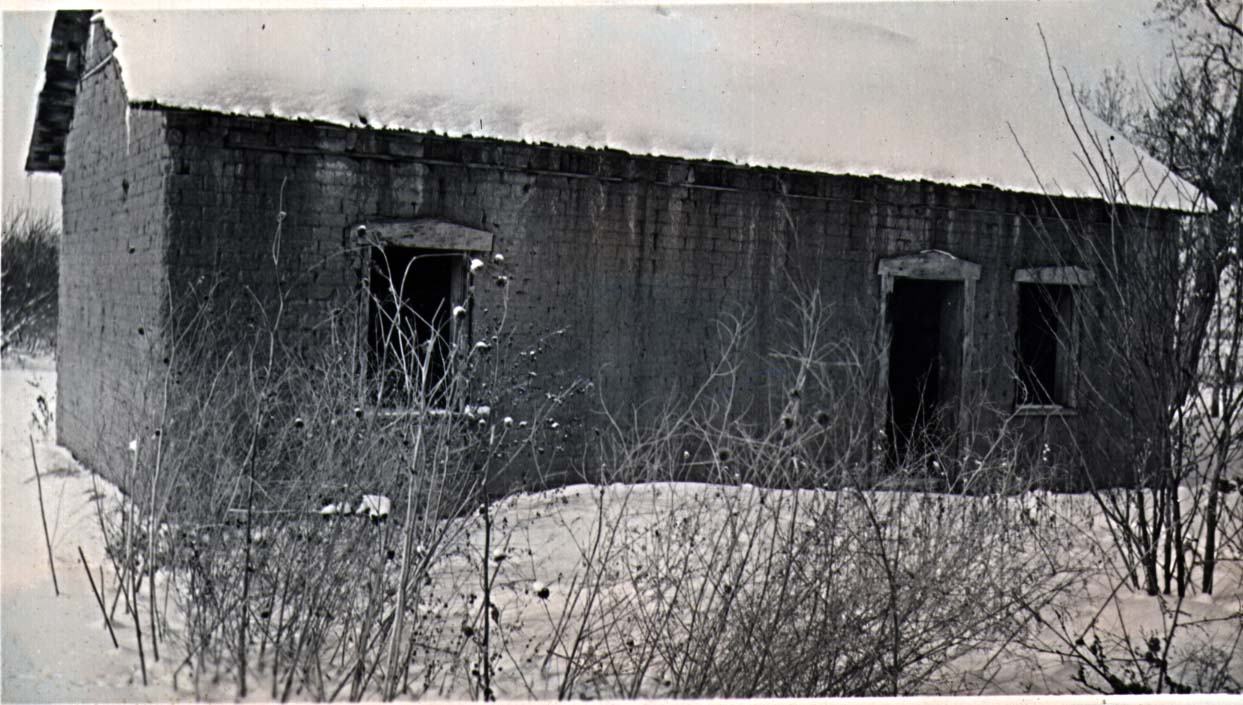
Ane Pedersen Anderson Lovell History
Home
Histories
Charts
Photos
Maps
Restricted
News
Info
Contact
Married Jens Andersen  |
Also married  John Lovell John Lovell 
|


ANE PEDERSEN ANDERSEN LOVELL
(This history is taken from "The Descendants of Ane Pedersen Andersen Lovell" compiled by Glenn and Maurine Widdison, pages 8-12)
An expanded history of her life can be found in two newsletter articles: Vol. 7, No. 1 (the early part of her life), and Vol. 3, No. 3 (her later life in Utah).
Ane was a blue eyed, blonde haired Danish girl, born Sonderup, (Aarslev) Soro County Denmark, 18 March 1824. She lived a happy normal life, in her parents home, with her 3 sisters, Anna Marie Maren, and Sidse Kirstine and 2 brothers, Hans and Jens, until she was past ten years of age. Death came and claimed her father, Peder Jorgensen, on 13 November 1834 when 40 years of age. (The reason of her father's name being Jorgensen is the patronymics which was used in Denmark at that period of time, it is a patrilineal surname formed by the addition of a prefix or suffix indicating relationship to the name of one's father.)
In less than eight months, on 5 July 1835, Ane's mother, Kirsten Hansen died, leaving the family of six children as orphans. The oldest daughter was 15 years and the youngest was 5 years old.
The little 11 year old Ane was placed in the home of one of her uncles. He was a stern hard working man. He raised a great number of pigs which he slaughtered and shipped to market. Ane was required to work long hard hours along with the rest of the family.
One night after a tiring day of butchering, she was given the job of holding a light while the pork was packed and loaded. It was tiresome and very cold as the night wind blew in from across the wintry north sea. Her body was not too well protected with clothing, so that when the loading was finally finished, at a very late hour, Ane was chilled through and through. She developed a very bad cold and was very ill for quite a length of time. During this illness she lost her hearing to a great extent. She remained partially deaf for the rest of her life.
Ane married Jens Andersen on 1 December 1846 at Taarnborg, (Svenstrup) Soro County, Denmark and their first son, Anders Peter, was born there 10 December 1847. A second son, Christian, was born at Vemmelev, Soro County, 19 February 1853. This family was converted by the L. D. S. Missionaries and joined the Church in Denmark. They left Copenhagen to join the Saints in Utah on 22 December 1853. Their baby being 10 months old. They were days getting to Liverpool. They left England 31 December 1853, on the sailing ship, "Jesse Munn".
Christian Larsen of Logan, Utah was the leader of the Company of Emigrants from Copenhagen to Kansas City. Just a day or so before they were to land in America, a strong contrary wind came up and carried them back upon their course for several days. This delay in their voyage left them with very little food for the last of their trip. They had been eight weeks upon the ocean.
How happy and relieved they were when they sailed into the mouth of the Mississippi River on 16 February 1854, and were transferred to a river boat, where there was fresh food and plenty to satisfy their hunger. The river boat was called "St. Louis". They arrived at the city of St. Louis, Missouri on 11 March 1854. A rest of a month was made there then they sailed up the river to Kansas City, Missouri. From there they crossed the plains in Hans Peter Olsen's company, who traveled in wagons sent from Salt Lake City for the emigrants who were without traveling facilities of their own. They arrived in Salt Lake City about the 4th of October 1854.
When President Brigham Young found out that Ane's husband was an expert wheelwright and that he had bought with him a good set of tools, he asked him to go to Fillmore and make his home as they were greatly in need of a person of that trade down there. So they went to Fillmore with the first company that could take them along. Upon arriving in Fillmore, they were permitted to live in one of the small rooms in the Old Fort. The trip had been a long year of weariness, full of hardships and anxieties. Jens was not well when he reached Fillmore, but felt sure he would be all right now that their journey was at an end. But he continued to grow weaker.
3 October 1855, Ane gave birth to her third son, Joseph Smith. When the baby was only 18 days old on 21 October 1855, his father passed away, leaving the mother and her three small sons unable to speak or understand a word of English. The two older boys had no shoes to wear that winter. Bishop Noah Bartholomew asked one of Ane's close neighbors, John Lovell, to watch out for this Danish sister and her family and see that they were taken care of. While taking care of Ane and her children. John's sympathy developed into a sincere admiration for her, so on the 4th day of April 1857, with the permission of President Brigham Young, he and Ane were married for Time in the Endowment House in Salt Lake City. (John Lovell stood in proxy for Jens Andersen and had Ane sealed to Jens Andersen. John Lovell is sealed to his first wife Ann Parsons and his second wife Elizabeth Smith.)
John and Ane's first child was a daughter Castina (Dean), born 6 March 1858 in Fillmore, she married Anthony Christensen. Their second child was also a girl, Ann Elizabeth, born 13 December 1859 at Fillmore. She married Frederick Rich Lyman and was the midwife at Oak City for many years. In March of 1860 on the advice of President Young, John Lovell along with Jacob Croft, Thomas, Lee R., and Wise Cropper and a number of other Fillmore men went to Deseret and placed the first dam in the river and commenced to establish the community of Old Deseret. John Powell, in his journal, writes that Ane Lovell was the first white woman to make her home in the Deseret country. Their home was an adobe two room house with a large fire place in each room. They gave the Indians flour and other food to get them to help clear the land of greasewood. In Deseret on 19 December 1861, their son, Brigham Anderson Lovell was born. He was the first white child to be born in that community.
A second son was born to Ane and John on 14 December 1863. They gave him his father's and grandfather's name, "John Edmund Lovell". Ane was unable to nurse her baby and they didn't have a cow, but they did have sheep. The baby was supplied with milk from one of their ewes and survived and did well. Four years later on 9 January 1867, a baby girl was added to the family. Her name was Sylvia Ann and she later married Walter Clisbee Lyman. Ane's life in old Deseret was a severe struggle (as everyone's was) because of scarcity of food, good water and clothing, constant fear of Indians, extremes in the weather, and the impossibility of harnessing the river. John's son George Lovell and Ane's sons, Anders Peter and Joseph Smith had helped to build the mud fort to protect the community from the Indians.
They tried hard to establish themselves for eight years, but not being successful, in the early fall of 1868, John and Ane moved the movable parts of their home to Oak Creek, 22 miles east of Deseret. They had a span of mules named John and Tom and a large California style wagon. They hauled a nice fat pig along with their other things in the wagon. The journey took them from daylight until dark. They way was hot and dusty, more than the porker could stand. It died during the first night, leaving the family without lard and meat supply for the winter.
John built a duplicate of his Deseret home in Oak Creek. There were only four other houses built at that time in the new settlement. Their two room adobe house stood on the corner, south across the street from the dance hall until it was torn down in May 1946.
All the while Ane's husband had lived in Deseret he had tried hard to get fruit trees and berry bushes to grow, but was unsuccessful. He started planting on his new property and it wasn't long before he had apples, peaches, and plums for his family to use. Ane dried the fruit for the winter's use and also a surplus to exchange for flour and clothing. They were soon able to raise sugar cane and make molasses, which was a wonderful thing for them to have. There was no such luxury in those days. Ane soon learned to make molasses sweet cake which delighted her family greatly. However, it was difficult to bake it in the coals in the fire place without burning most of it. Ane's good neighbor, Louisa Walker, who lived across the street, had a cook stove and she invited Ane to bake her molasses cakes in her oven.
About seven years after Ane moved to Oak Creek and she was around Fifty one, her husband took several sacks of corn, he had raised, to Fillmore and traded them for a charter cook stove and an eight day clock. Never was a woman more pleased over anything in her life. It was the only stove she ever had. It didn't have a heating oven, but it always baked well. John raised broom corn and made brooms, a trade he had learned in England. Anders Peter, Ane's oldest son, made wooden wash boards for Ane with a grooved plane his father had brought from Denmark. The only light they had at night besides the fire light was a "zilch", or cup of grease with a cotton rag in it. Later Ane secured a candle mold which she made candles with, when beef and mutton tallow was available, The mold held 4 candles and was the only one in the community for a number of years. Her sons, Brigham and John, sometimes took candles to the dances to pay for their tickets. Her children gleaned in the grain fields each fall. Castina, the oldest daughter, was very quick and always had about as much as the rest put together. She was also very efficient at spinning yarn. She could spin as much as 4 skeins of yarn in one day. When a carding mill was established in Manti, they sent their wool over there to be carded into rolls. Ane sent butter along with the wool to grease it so that it would handle easier and wear longer.
She hired her daughter-in-law, Annie Christensen Anderson, to weave it into cloth which she made into clothing for her family. Sister Peasa also wove cloth for her. These women wove two kinds of cloth, one for men's clothing for her husband and sons. There were four colors of cloth in those days, blue, made from blue vitriol; chamber blue, a dye obtained from wine; black, from logwood; red, from madder roots and yellow, from peach leaves. Ane did all the knitting for her family and her fingers were always busy making stockings and mittens.
John Lovell was appointed Presiding Elder when the Oak Creek Branch was organized. When the ward was organized he was chosen as first counselor to Bishop Platte D. Lyman. In 1874 on May third, the Oak City Relief Society was organized and Ane was chosen as first counselor to President Caroline Ely Partridge Lyman, an office she held for many years.
In the early days of Oak City, the people of the town established a Co-Op store with Ane's son, Anders Peter Anderson as manager. He had to run his farm also, so his mother became the principal clerk. She did not stay in the store but went in when she was called. Her home was across the street diagonally from the store and there was a well worn trail made by her feet, the barefooted youngsters, and their mothers. They came with their buckets of eggs to sell and their empty coal-oil cans to be filled. Ane kept the accounts in Danish, then each week Peter would put them in English. She clerked in the store for about 12 or 15 years.
Ane's three older sons all married Annies, so she always referred to them as Annie L., Annie C., and Annie N. Her two younger sons married Harriets, and they were always called Harriet Brig and Harriet John.
Ane's husband, John Lovell, passed away on 13 January 1881, in her home in Oak City. This left her living alone now that her children were all married. Mettie Christensen (Talbot) a grand-daughter lived with her for a few years. Ane always kept a cow, chickens and a pig and took care of them until she was too feeble to do so. She lived in her own home until she was 86 years old, then she went to live with her son, John Edmund in his new home. She lived there for 10 years. When Ane was 96 years 4 months, and 10 days old she died. The day she died was 28 July 1920, she was buried in the Oak City Cemetery.
A little blue eyed girl who had many obstacles in growing up, who traveled across a continent and lived a full life with varied experiences. She was always devoted to her family and her church. She always wore a little knot hood during the day and a white cotton hood at night. She never ate anything but bread and milk for her supper. Her front yard was a solid cluster of bright colored hollyhocks and huge lilac bushes. Brigham inherited his mother's home and lot.

Ane's Home in Oak City